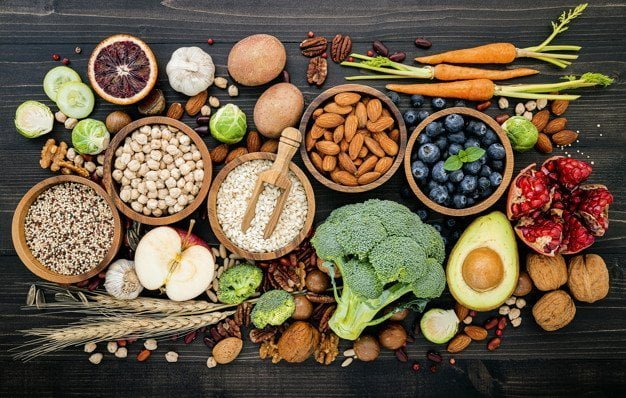Becoming a pastry chef is no easy task, not only you have to be foody but also you need to be health-conscious eaters. But it can be quite fulfilling if you’re passionate and driven. However, you need to go beyond successfully finishing pastry school.
Aside from having proper training in the trade, you also need to do research on the trends in the industry. Knowing the pulse of the market will help your bakery business thrive.
Baking For Health-Conscious Eaters
When it comes to succeeding in the industry, booming sales tend to be the first thing that comes to mind. In some cases, becoming a well-known brand or a household name is considered a success.
However, some chefs find glory not in fame or fortune but in knowing that their customers are satisfied and healthy at the same time. If this echoes your principles as an aspiring pastry chef, then follow these six tips for baking for health-conscious eaters:
1. Make Your Products Gluten-Free
Successfully retaining the mouthwatering taste and reputation of pastries without using gluten is a major challenge that health-conscious eaters bakers face.
Almost all pastry products are made with this ingredient — from the usual daily bread to more decadent desserts. However, gluten has gained a bad reputation among health-conscious eaters. It is believed to have a number of side effects on the body for certain people.
For one, gluten causes activity in the immune system that can damage the lining of the small intestines. This condition, called celiac disease, can impede the proper absorption of nutrients from food.
Gluten can also trigger allergies and an autoimmune disorder known as gluten ataxia which affects the nerves that lead to voluntary muscle movement and muscle control issues.
Considering all these, it isn’t surprising why many eaters have become more conscious about whether their food contains gluten. Since most baked goods often contain this ingredient, some people may end up refusing your food. Unless, of course, you replace gluten with an alternative ingredient.
Fortunately, there are plenty of gluten-free baking substitutes you can use, including:
- Amaranth – a peppery-flavored ingredient rich in protein, iron, and fiber
- Quinoa – an ingredient found in South America that has a mild, nut-like flavor
- Flax – another nut-flavored ingredient that adds a spongy texture to baked goods and is rich in fiber
- Millet – a sweet and delicate-tasting ingredient perfect for use in flatbreads and muffins
- Buckwheat – a nutrient-rich ingredient with a bitter flavor but is perfect for use with other, more flavorful ingredients
- Teff – an African grass that can be used as a thickener
2. Reduce Sugar Content
One of the first few things that come to mind when making more nutritious baked goods — or any other type of food — is putting less sugar in them.
When it comes to sugar, the rule of thumb is to reduce the amount by approximately 25 percent of the required measurement. For example, if the recipe says that you need to put in four tablespoons of sugar, you can make it three tablespoons instead.
Doing so wouldn’t have any noticeable difference in taste while still cutting down on the sugar. It is also worth noting that you would have to increase the amount of liquid when adding less sugar in the mixture.
3. Check Your Other Ingredients
Aside from gluten, there are other ingredients in pastries that can be replaced with healthier alternatives.
For example, instead of using all-purpose flour, you can bake using white whole-wheat flour. As a general rule, you can swap as much as half of the all-purpose flour with whole-grain flour without making any significant adjustments to the recipe.
Going with low-fat dairy products is also a good idea.
When you add dairy to your baked goods, make sure that you replace milk with low-fat options like yogurt or buttermilk. These contain high protein and calcium, without the added calories. You should also consider substituting high-calorie cream cheese frosting with one made with a high-protein, low-fat ingredient like Greek yogurt.
Of course, you always have the option to toss in some whole foods into the mix, like fruits and vegetables. You can try pureed or shredded carrot, apple, pumpkin, or banana to give your recipes a nutrient boost. Fruits and vegetables also add flavor, moisture, and fiber, making pastries healthier and more delicious at the same time.
4. Watch the Portions
Another way to help health-conscious eaters while satiating their cravings for desserts and pastries is to keep the portions in check. This is one of the main strategies that help health-conscious eaters, as well as those following a strict low-carb diet, maintain their regimen while still enjoying baked goods.
To start, you can make mini versions of pastries to offer the same mouthwatering taste but with fewer calories and fat. You can also opt for tray bakes like carrot cakes that can be cut into smaller squares (around two inches per piece). This helps to keep cookie dough scoops to one tablespoon per serving.
5. Choose Healthier Icing
Icing is seen as one of the least healthy components of baked goods, but this doesn’t need to be the case. To do so, you can replace the traditional butter-based frosting with water icing, also known as glacé icing.
You can also choose to lightly sprinkle your baked products with icing sugar for that final touch. To make it more visually appealing, cut out stencils on grease-proof paper and sift icing sugar over it.
6. Pick Your Fat Wisely
Pastries aren’t always considered the heart-healthy choice, especially since roughly one-third of puff and short-crust pastry is essentially fat. It even has higher saturated fat content if you used butter or palm oil to make it.
To bake with less saturated fat, you can try swapping some portions of the butter with heart-healthy oil, like canola and sunflower spread.
However, you must remember to avoid replacing the butter altogether as the texture may not turn out as you have hoped.
A Better Way to Bake
Training to become a great chef by taking professional chef courses (suggested link change – https://iccadubai.ae/culinary-programs/professional-chef-training/) is only half the battle; you also need to be more conscious about the food you serve. Make your pastries and baked goods more nutritious while retaining (if not improving) their decadent taste. Implement changes in the way you bake to achieve both of these goals, starting with the tips listed in this article.
Read also: Reasons to Let Go of an Unhealthy Lifestyle and Start Eating Healthily Now




























